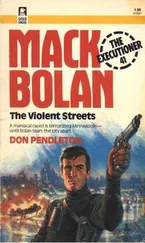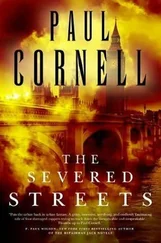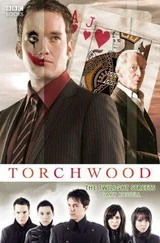They went after the Fish Man for the last time in December. He didn’t break. Latonya Wallace would not be avenged. But by then I had seen enough to know that the empty, ambiguous ending was the correct one. I called John Sterling, my editor in New York, and told him it was better this way.
“It’s real,” I said. “It’s how the world works, or doesn’t.”
He agreed. In fact, he’d seen it before I did. He told me to start writing, and after staring at the computer screen for a couple weeks, wondering how you type the first fucking sentence of a fucking book, I found myself back at the Market Bar with McLarney, who swayed to the rhythm of a ninth Miller Lite and eyed me, much amused at my predicament.
“Isn’t this what you actually do for a living?”
Sort of. Except not something so big as a book.
“I know what you’re gonna write.”
Do tell.
“It’s not about the cases. The murders. I mean, you’ll write about the murders so you have stuff to write about. But that’s all just the bullshit.”
I listened. Carefully.
“You’re gonna write about us. About the guys. About how we act and the shit we say to each other, about how pissed off we get and how funny we are sometimes and the shit that goes on in that office.”
I nodded. As if I’d known it all along.
“I’ve seen you taking notes when we were just bullshitting, when we’re just sitting around with nothing to do but jerk each other around. We piss and moan and there you are writing. We tell a dirty joke and you’re writing. We say anything or do anything and you’re there with your pen and your notepad and a weird look on your face. And fuck if we didn’t let you do it.”
And then he laughed. At me, or with me-I’ve never quite been sure.
The book sold some copies. Not enough to make any bestseller lists, but enough that Sterling was willing to pay me if I could manage another idea for another tome. Roger Nolan confiscated my police intern ID and I went back to the Sun. The detectives went back to having their world unexamined. And save for an immediate, panicked reaction by the department brass in which there were threats to charge the entire unit with conduct unbecoming an officer-the raw wit and rampant profanity of their underlings left colonels and deputy commissioners shocked, shocked, I tell you-the general response to Homicide: A Year on the Killing Streets seemed to be no less muted than that which greets most narrative nonfiction.
Certainly, it didn’t help that the tale came from Baltimore. The editor of the New York Times Book Review declined initially to review the work, declaring it to be a regional book. A few police reporters at other newspapers said nice things. One evening, when I was working rewrite, plugging out-of-town temperatures into the weather chart, William Friedkin called from Los Angeles to say how much he enjoyed the book.
“William who?”
“Friedkin. I directed the French Connection? To Live and Die in L.A.?
“Alvarez, stop fucking with me. I’m late with the goddam weather table.”
A few more deep breaths like that one and the hardbacks copies were off the display shelves and consigned to the true-crime section. I nestled back into the Sun, took up my old beat and began encountering the detectives from the other side of the crime-scene tape. Once, at a triple murder in North Baltimore, I lost my temper at Terry McLarney when he wouldn’t come out of an indoor crime scene to debrief me even as the home-final deadline passed. In the squadroom the next day, as I was ranting with probably a bit too much indignation, Donald Waltemeyer suddenly exploded out of his chair like a.45 round.
“Jesus fucking Christ, Simon. Listen to you. You’re like one of these fuckin’ defense lawyers who get you on the stand and start asking if it’s true, Detective Waltemeyer, that you fucked some broad in 1929. Who gives a fuck? McLarney was on a scene and he didn’t give a fuck about your fuckin’ deadlines. So just go fuck yourself and tell your newspaper to go fuck itself and stop bein’ a fuckin’ lawyer with us.”
I looked over to see McLarney giggling, hiding his face in his sport-coat.
“A whole year up here,” Waltemeyer concluded, “and you’re still nothing but a prissy bitch.”
Ah, normalcy.
And it might’ve stayed that way had not Barry Levinson bought the book and metastasized the thing into an NBC drama, turning our small, self-contained world upside down. Suddenly, Edgerton was some proud, fully intellectualized peacock of a detective named Pembleton. And McLarney was bald with a funny mustache, and obsessed with the Lincoln assassination. And Worden was that actor-whatshisname-the one that got fucked in the ass in Deliverance. And Garvey? Damned if they didn’t give Rich Garvey red hair and tits. He was a woman, for Chrissake.
For me, Homicide: Life on the Street was a strange stepchild at first. I admired the drama and the craft of it-and to the detectives themselves, I actually defended the show’s willingness to fictionalize their world as a necessary license for long-form storytelling. I was certainly happy to have the book rediscovered; well before the NBC show ended its run, a quarter of a million copies were sold. But, in truth, I was ambivalent.
After reading the first three scripts, I wrote a long memo to Barry Levinson and Tom Fontana in which I explicated the intricacies of various investigative techniques and legal requirements. No, you cannot search a suspect’s domicile for a weapon because a detective dreamed that the gun was there. Probable cause is a required element for any affiant to obtain a search-and-seizure warrant signed by a circuit court, and so forth and so on and furthermore, et cetera, et cetera…
Nonfiction boy, Fontana called me after that, and not with any particular fondness.
I went to the set a couple times during filming, standing around like any other tourist. The detectives themselves would occasionally show up, usually with wives or girlfriends who wanted to meet Danny Baldwin or Kyle Secor. A few took the gig of technical advisor, sitting by the video monitors and offering advice when asked, and sometimes, to the chagrin of the film company, when not.
A special moment in this regard belongs to Harry Edgerton, who, upon witnessing Frank Pembleton-his television alter ego-order a Scotch and a milk at a bar, shouted, “Cut.”
Barry Levinson turned to look at his technical advisor as if to examine a new species. Assistant directors and junior producers scurried to immediately right the wrong.
“But there’s no way I would drink something like that,” Edgerton said to me later. “Scotch and milk? Seriously, Dave, people I know are gonna see that and what are they gonna think?”
Eventually, Gary D’Addario-a man of demonstrated tact and discretion-became the solitary advisor and, in time, played the role of a tactical commander in the cast. And, as the novelty of filming wore thin, the other detectives drifted away. So did I, feeling, as all authors probably do on a film set, entirely beside the point.
To be fair, one of the producers, Gail Mutrux, had asked if I wanted to try my hand at writing the pilot for the show. Ridiculously ignorant of the money involved, I had declined, telling Gail-who first read Homicide and brought it to Levinson’s attention as possible television fare-that she should get someone who knew what he was doing, if only to give the project a fighting chance. I would, if they wanted, take a later script, writing only when a template for the show was established.
Fontana and Levinson obliged. And that later script, which I cowrote with David Mills, a friend from college newspaper days, proved so relentlessly dark and unsparing that NBC executives declined to allow it to be shot during that first season of the drama. It was only a year later, during the truncated, four-episode run of season two, that it was filmed, and then only because Robin Williams had agreed to star in the guest role.
Читать дальше












